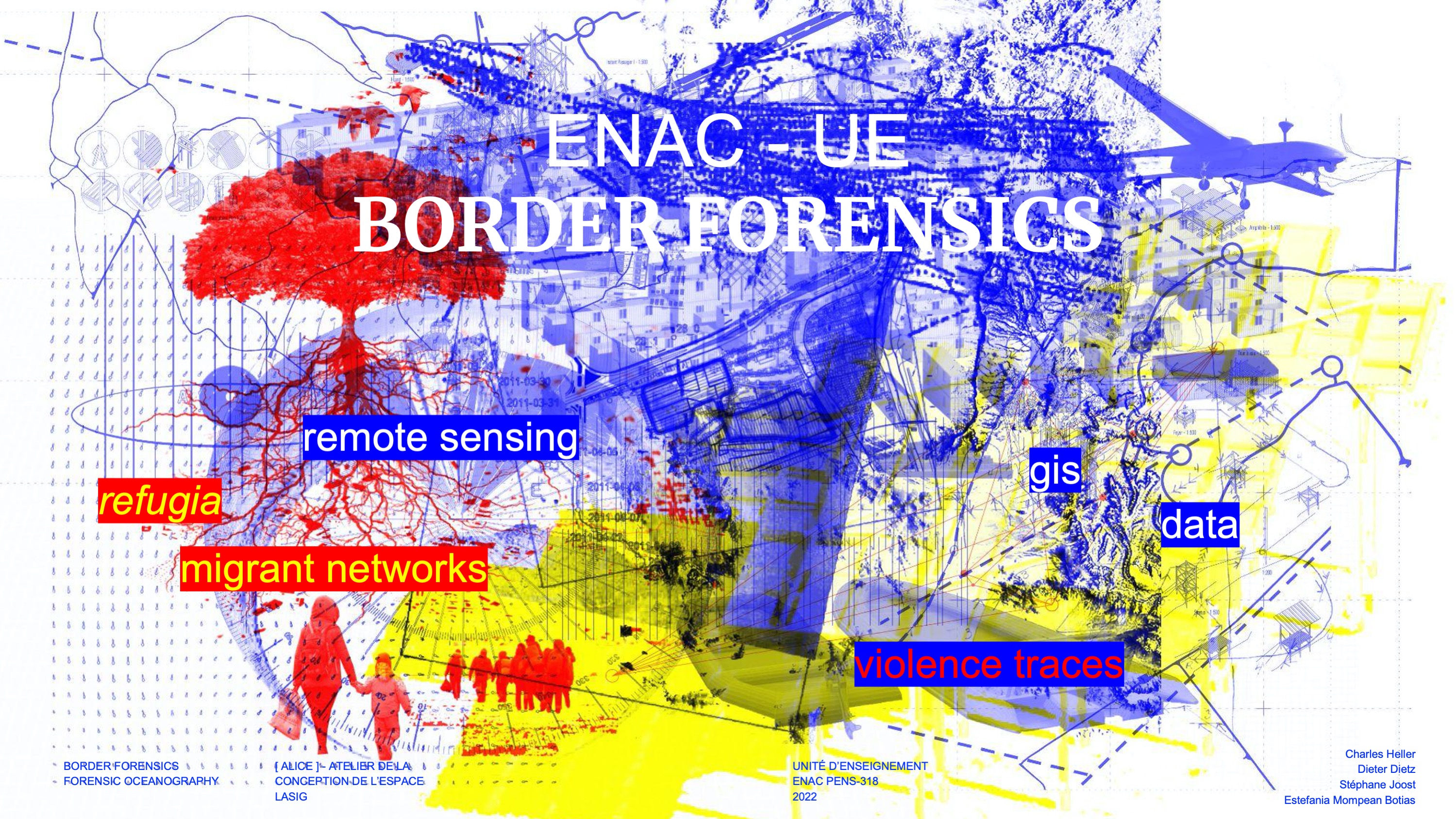
The idyllic landscape of Switzerland is striated by multiple borders and social boundaries, which particularly affect asylum seekers as well as racialized citizens. This course will introduce students to scientific and spatial methods inspired by counter-forensics practice allowing to document, contest and transform these forms of violence by working practically on investigating specific situations in Switzerland. In particular, we will explore the forms of harm that are inflicted on asylum seekers in an indirect way through the 'Swiss Asylum Dispositif' (Panese 2022). The laws, administrative measures and bureaucratic practices that make up the Swiss asylum dispositif and are mobilized with the aim of selecting people and controlling migratory flux transport and translate borders within the State, "into the middle of political space" (Balibar 2004, 109), along with their "potential for violence" (Panese 2022, 18). While the violence perpetrated by the "borders within" the Swiss territory may be less spectacular than the large-scale deaths of migrants crossing the external borders of Europe, it nonetheless translates into social exclusion, as well as psychological and physical harm. We will further explore the ways in which the social boundary of race affects racialized subjects (who may be foreigners or Swiss citizens) experience of space, subjecting them to the constant threat of racial profiling and police violence. Through both these directions of research, we will explore the broader theme of how borders and social boundaries materialize in urban environments.
The course is divided into three main parts. The first part offers a theoretical and methodological introduction to border violence and its documentation. We will examine the development and use of counter-forensic techniques pioneered by Forensic Architecture to make traces of violence emergence and present them in various forums. We will focus specifically on the research conducted within the Swiss-based research agency Border Forensics. The second part will initiate students to the concrete experimentations and applications of those methods while reflecting critically on their use and sometimes ambivalent effects. The third part of the course will bring students to focus on specific manifestations of borders and social boundaries across the territory of Switzerland, and the way they affect the lives of asylum seekers as well as negatively racialized citizens. Students will develop their own investigations in groups and experiment with tools and approaches they encountered in the first part of the class. Anchored in the contemporary context of violence experienced in and produced by the Swiss asylum dispositif, a particular attention will be put on the bridge between research and practice as well as on the potentials for collaborative and participative research.
The course will allow students to address a wide range of questions such as: How political terms such as violence, authority, and power is understood in the context of Swiss asylum dispositif? How can we understand and register violence in its many different guises? How does the violence of borders and social boundaries operate and how are geophysical environments harnessed within it including the urban space itself? How can we navigate complex regimes of (in)visibility, in which deaths can be hidden but also spectacularised? How does the notion of dehumanization impact the institution's policies and practices, and how does it relate to the survival strategies adopted by asylum seekers in that space?
What are the politics of different technologies and methods used to reconstruct cases of violence? How can spatial interventions articulate places of (in)visibility, resistance, coordination, and memory? Can these interconnected places become places that question the very process of the city and the built environment?
By exploring these questions, the course will equip students with the conceptual tools to navigate the complexities of research-based spatial practice.
- Professor: Martí Bosch Padros
- Professor: Dieter Dietz
- Professor: Nathalie Fanzy
- Professor: Munia Hassoun
- Professor: Stéphane Joost
- Professor: Mathias Lerch
- Professor: Stanislas Hugo Werner Michel
- Professor: Estefania Mompean Botias
- Professor: Elio Panese
- Professor: Elio Simon Panese
- Professor: Sanja Platisa
- Professor: Marie Hannah Florence Trossat
